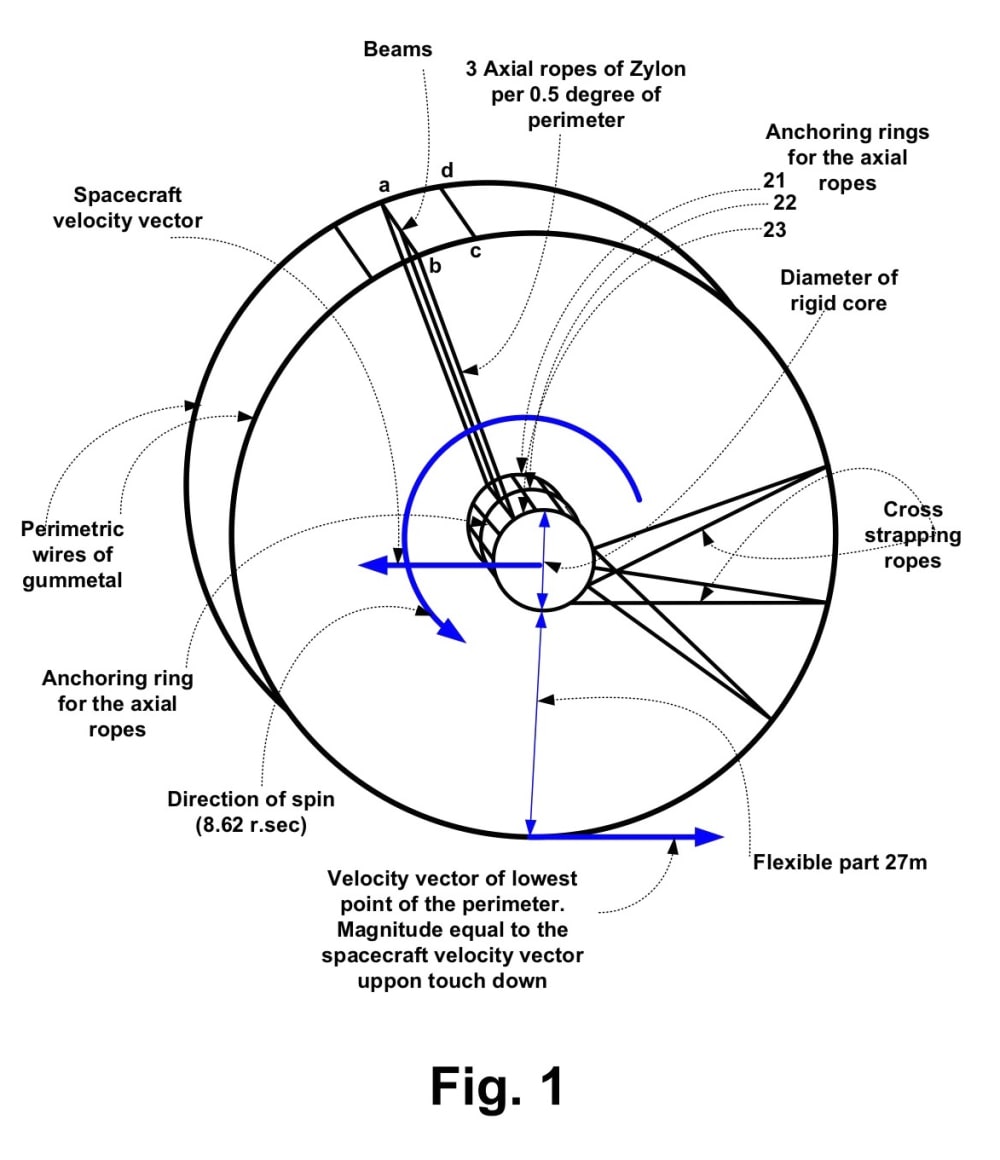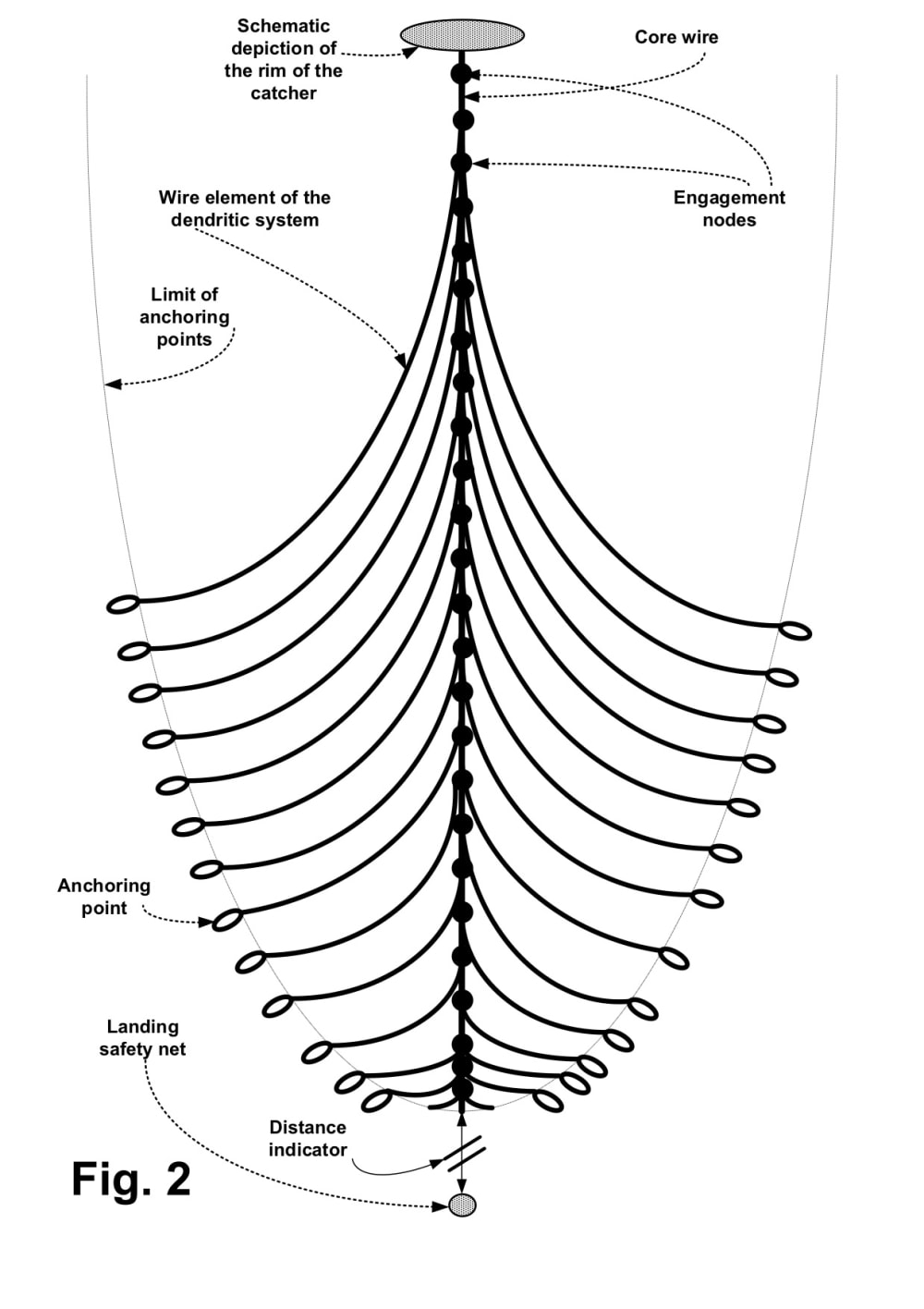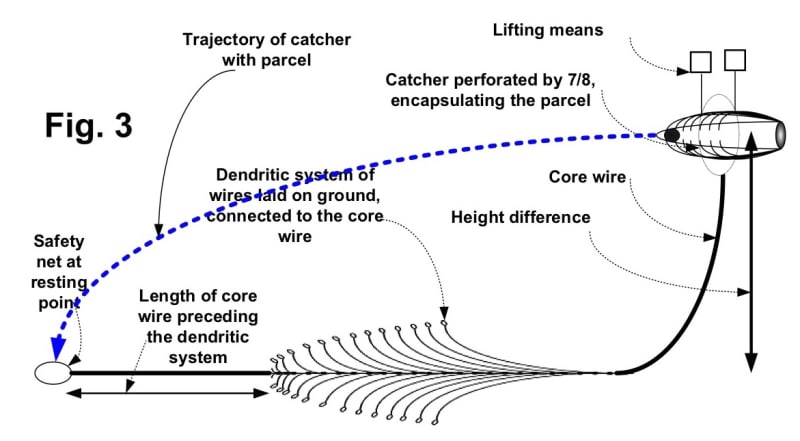Two concepts invented for delivering cargo to the lunar surface: OPLONAS (Oversized Payload Lander On Non-Atmospheric Somata) and MACEDONAS (Momentum Absorption Catcher for Express Delivery on Non-Atmospheric Somata). The second can derive from the first by scavenging the flexible elements of OPLONAS, the radial high tensile ropes and the perimetrical wires. Both are characterized by economies of scale and evolvability. The OPLONAS may evolve into two, three or 4 wheel spacecraft, while the MACEDONAS may evolve to reverse (and forwarding mass-driver).
The cost reduction they can achieve is 70% of current and projected, as the landing will be achieved without fuel consumption. Typical calculations in Apollo era and Artemis derived Orion used a 70/30 ratio between descending and ascending modules.
OPLONAS is configured as a wheel-shaped spacecraft that has a rigid cylindrical core of 6m diameter and 9m length. The cylinder possesses three or more rings from which emanate radially ropes of high tensile strength of 27m length, which further hold when extended a perimetric surface consisted of gummetal based wires and connecting beams. The flexible elements of the spacecraft are wrapped around the rigid cylindrical core, for launching it in a compact format. While on orbit around the Moon the spacecraft targets a flat area for landing and enters spin motion. It releases the flexible part gradually to its full extend. Spinning up to 8.62 rev/sec before forcing the spacecraft to land it gives it gyroscopic rigidity and stiffness to negotiate obstacles and anomalies on the ground. The obstacles and soil consume kinetic energy till its rests.
MACEDONAS is configured by 4 elements, whose material can be sourced by scavenging the flexible elements of OPLONAS.
- A catcher consisting of embedded concave surfaces with a common rim
- The central wire. A thin wire that connects the rim of the catcher with the dendritic system
- The dendritic system, a structure of wires that engage mechanically to the central wire
- The safety net for final landing of the parcel with the catcher.
The operating principles are such that the payload is released at a trajectory that passes through the rim of the catcher. The catcher is propelled to the vector of motion of the payload after it perforates several but not all of the concave surfaces of the catcher.
The central wire is pulled by the rim and in its turn engages mechanically the successive segments of the dendritic system, gradually absorbing the kinetic energy of the payload. When all the kinetic energy of the payload is eliminated the payload falls on a safety net.
Then a robotic system collects the payload and restores the MACEDONAS in its initial configuration, replacing only the catcher, given that several of the concave surfaces would have been perforated upon impact. So MACEDONAS is highly reusable.
MACEDONAS can be installed anywhere on the surface of the Moon and can benefit from natural altitude differences between catcher and safety net. In areas where this is not readily available we may lift it artificially.
Like this entry?
-
About the Entrant
- Name:Charalampos Kosmas
- Type of entry:individual
- Software used for this entry:MS Visio
- Patent status:pending








